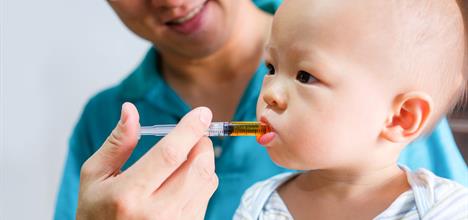- Your cart is empty Browse Shop

Complete Childrens Medicine dosing guide: Safe Dosing Tips and Guidelines (2025)
Table of Contents
INTRODUCTION
Childrens’ medicine dosing guide.
Picture this: It’s 2 AM, your child has a fever, and you’re staring at the medicine cabinet feeling overwhelmed. You’re not alone! According to the CDC, medication errors lead to over 70,000 emergency room visits for children annually. As a pediatric healthcare pharmacist, I’m here to guide you through everything you need to know about safely giving medicine to your children. Let’s turn that uncertainty into confidence! Childrens’ medicine dosing guide.
Weight-Based Dosing Fundamentals
Pediatric medication dosing relies primarily on a child’s weight rather than age. This is because children of the same age can vary significantly in size and metabolism. For most medications, doctors calculate doses in milligrams per kilogram (mg/kg) of body weight. For example, children’s amoxicilin is typically dosed at 30 mg/kg every 6-8 hours.
Always weigh your child regularly, as proper dosing depends on current weight. A 5-pound weight gain can significantly change the appropriate dose. Keep a record of your child’s weight in both pounds and kilograms (1 kg = 2.2 pounds) for quick reference. Childrens’ medicine dosing guide.
Measurement Tools and Accuracy
Proper measuring tools are crucial for accurate dosing:
- Use only the measuring device provided with the medication
- Never use household spoons (they can vary by 50-100% in volume)
- Clean measuring tools between uses
- Check measurements at eye level on a flat surface
Common measurement conversions:
- 1 teaspoon (tsp) = 5 milliliters (mL)
- 1 tablespoon (tbsp) = 15 milliliters (mL)
- 1 ounce = 30 milliliters (mL)
Step-by-Step Dosing Calculation
- Obtain current weight in kilograms
- Identify the medication’s mg/kg dose
- Multiply weight by recommended dose
- Check medication concentration
- Calculate volume needed
Example Calculation:
- Child’s weight: 20 kg
- Acetaminophen dose needed: 15 mg/kg
- Total dose = 20 kg × 15 mg/kg = 300 mg
- If using 160 mg/5mL solution:
- 300 mg ÷ (160 mg/5mL) × 5mL = 9.375 mL
- Round to nearest measurable amount: 9.4 mL
Special Dosing Considerations
Newborns (0-28 Days)
Limited ability to metabolize medications, higher risk of medication accumulation, need for frequent dose adjustments based on rapid weight changes, special consideration for medications that can affect bilirubin levels and careful monitoring of kidney and liver function. Avoid certain preservatives and additives.
Infants (1-12 Months)
Rapidly changing body weight requires frequent dose adjustments, different absorption rates for certain medications, special attention to feeding schedules and medication timing, need for appropriate medication forms (liquids vs. suspensions), consideration of developmental milestones and impact of starting solid foods on medication absorption. Childrens’ medicine dosing guide.
Toddlers (1-3 Years)
Increased metabolism rates may require more frequent dosing, challenge of medication adherence due to taste preferences, need for child-resistant yet accessible packaging, consideration of activity levels affecting medication absorption, impact of dietary habits on medication effectiveness and special formulations for picky eaters. Children’s medicine dosing guide.
School-Age Children (4-11 Years)
Variations in maturation affecting drug metabolism, consideration of school schedules for dosing times, need for school-compatible medication forms, impact of growth spurts on dosing requirements, ability to use different medication forms (chewables, tablets) and sports and activity considerations. Childrens’ medicine dosing guide.
Adolescents (12-18 Years)
Transition to adult dosing considerations, impact of hormonal changes on medication effectiveness, consideration of medication interactions with common teen supplements, need for independence in medication management, risk of non-compliance due to social factors and special considerations for females who may be menstruating. Childrens’ medicine dosing guide.
Conclusion
These guidelines are general. Always consult your healthcare provider for specific dosing instructions and follow the medication label carefully. When in doubt, verify doses with a pharmacist or doctor before administering medication. Children’s medicine dosing guide.
children’s medicine dosage chart
pediatric medication safety
kids medicine dosing guide
child medication calculator
safe medicine administration children
children’s Amoxicilin dosing
infant medicine safety
toddler medication guide
pediatric dosing calculator
kid medicine measuring tools
liquid medicine administration




